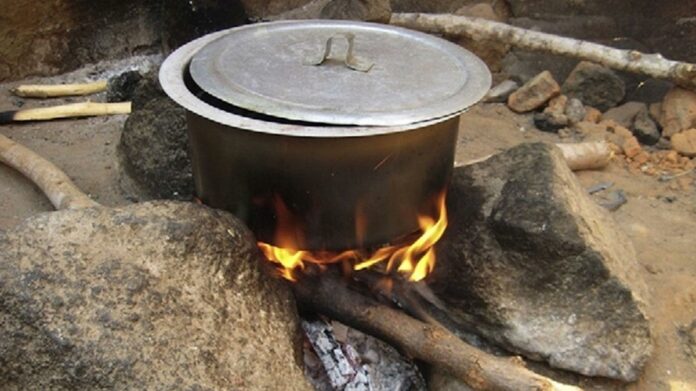Introduction
Food is not merely sustenance; it is a reflection of our culture, history, and identity. Traditional dishes hold a special place in our hearts, evoking memories of home, family gatherings, and celebrations. In this article, we will delve into the captivating world of traditional cuisine, exploring the history behind beloved dishes and their cultural significance. Join us on this culinary journey as we unravel the stories and flavors that have shaped our gastronomic heritage.

The Story Behind Traditional Dishes
Traditional dishes have deep roots, often originating from centuries-old recipes passed down through generations. These recipes are more than a list of ingredients and cooking techniques; they encapsulate the essence of a particular region, community, or country. Let’s explore the history and cultural significance of some beloved traditional dishes.
1. Pizza: A Slice of Italy
Pizza, a global favorite, has its origins in Italy. Its humble beginnings can be traced back to Naples, where it was initially a simple dish of flatbread topped with tomatoes, cheese, and olive oil. Over time, pizza evolved, with various regions in Italy developing their unique styles and flavors. Today, pizza represents Italian cuisine worldwide, symbolizing the passion and artistry of Italian food culture.
2. Sushi: A Taste of Japan
Sushi, a delicacy loved by many, has its roots in Japan. This ancient culinary art form dates back to the 8th century, where it was originally a preservation technique used to ferment fish with rice. Over the centuries, sushi evolved into an exquisite dish characterized by fresh, carefully selected ingredients and skilled craftsmanship. Beyond its gastronomic appeal, sushi reflects the Japanese philosophy of precision, balance, and respect for nature.
3. Paella: Spain on a Plate
Paella, a vibrant and flavorful rice dish, is synonymous with Spanish cuisine. Hailing from the region of Valencia, paella traditionally consisted of rice, saffron, vegetables, and meat. As the dish gained popularity, various versions emerged, incorporating seafood, chicken, or rabbit. Paella represents the warmth, conviviality, and zest for life that defines Spanish culture, often enjoyed during festive gatherings with family and friends.
4. Kimchi: Korean Fermentation Magic
Kimchi, a staple in Korean cuisine, holds a special place in Korean hearts. This fermented side dish is made from Napa cabbage, radishes, and a variety of seasonings. Kimchi is not just a culinary delight; it is a cultural icon deeply rooted in Korean history. It reflects the resourcefulness of Korean ancestors who found ways to preserve vegetables during harsh winters. Kimchi also embodies the importance of communal bonds and sharing, as families gather to make large batches together.
5. Peking Duck: A Chinese Delicacy
Peking Duck, a revered Chinese dish, is a culinary masterpiece. With origins dating back to the Imperial era, Peking Duck requires meticulous preparation and roasting techniques. The result is a crispy, golden skin and tender, succulent meat. Peking Duck represents Chinese culinary excellence and the art of achieving harmony between flavors, textures, and presentation. It continues to be cherished as a symbol of celebration and refinement.
Frequently Asked Questions
1. What is the significance of traditional dishes?
Traditional dishes hold cultural and historical significance, as they often represent a region’s culinary heritage, traditions, and identity. They provide a window into the past, offering insights into the local ingredients, cooking techniques,and cultural practices. Traditional dishes are also a source of pride for communities, as they showcase their unique flavors and culinary expertise.
2. How do traditional dishes preserve cultural heritage?
Traditional dishes play a crucial role in preserving cultural heritage. They are passed down through generations, ensuring that culinary traditions and recipes are not lost over time. By preparing and sharing traditional dishes, communities can maintain a connection to their cultural roots and transmit their culinary knowledge to future generations.
3. Can traditional dishes evolve over time?
Yes, traditional dishes can evolve and adapt to changing tastes, ingredients, and influences. As cultures interact and culinary techniques evolve, traditional dishes may undergo modifications while still retaining their core essence. These adaptations can result in regional variations or fusion dishes that incorporate elements from different cuisines, adding new dimensions to traditional recipes.
4. How can traditional dishes be celebrated and preserved?
To celebrate and preserve traditional dishes, it is essential to recognize their value and promote their continued practice. This can be achieved through:
- Documentation: Recording traditional recipes, cooking techniques, and cultural stories associated with the dishes.
- Culinary Education: Offering cooking classes, workshops, and educational programs to pass on traditional cooking skills.
- Cultural Festivals: Organizing events and festivals that highlight traditional dishes, allowing people to experience and appreciate their flavors and significance.
- Culinary Tourism: Promoting traditional dishes as a tourist attraction, encouraging visitors to explore local cuisines and culinary traditions.
- Support for Local Producers: Encouraging the use of locally sourced ingredients in traditional dishes, supporting farmers and artisans who play a vital role in preserving culinary traditions.
By actively engaging in these practices, we can ensure that traditional dishes continue to thrive and contribute to the richness and diversity of our culinary heritage.
Conclusion
Traditional dishes serve as a gateway to the past, offering a taste of history, culture, and community. They are a testament to the creativity, resourcefulness, and expertise of our ancestors. As we savor traditional dishes, we not only indulge in their flavors but also connect with the stories and traditions they carry. Let us embrace and celebrate the culinary treasures of our cultures, preserving and passing them on for generations to come.
============================================


